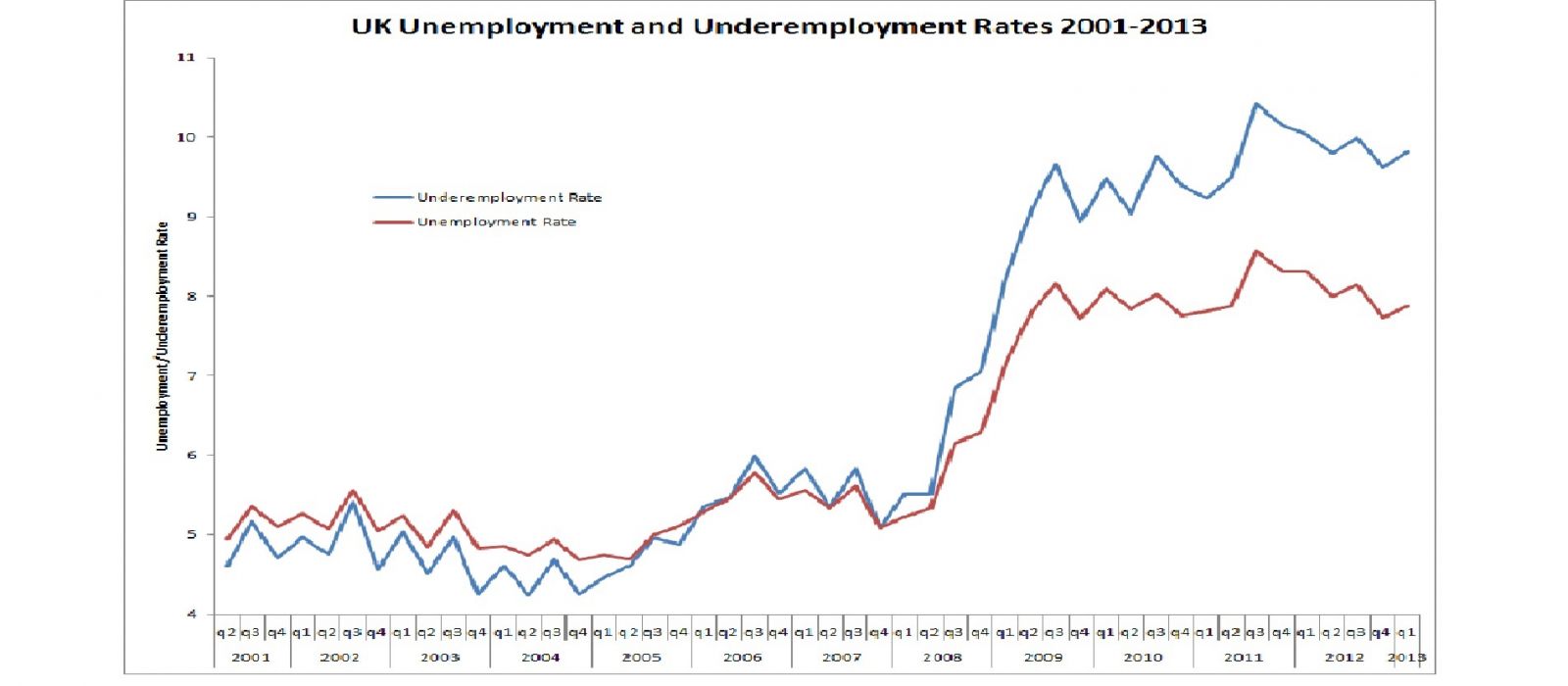Underemployment in the UK: an update from David Blanchflower (guest post)
In May David Bell and I published a paper in the National Institute Economic Review, introducing a new measure of labour market slack. The conventional measure of the difference between supply and demand in the labour market is the unemployment rate. But it does not capture a phenomenon which has become increasingly important during the current recession - underemployment.
In May David Bell and I published a paper in the National Institute Economic Review, introducing a new measure of labour market slack. The conventional measure of the difference between supply and demand in the labour market is the unemployment rate. But it does not capture a phenomenon which has become increasingly important during the current recession – underemployment.
Today we have updated our figures to the first quarter of 2013. Underemployment continues to rise: our latest estimate shows that the gap between the UK underemployment and unemployment rates rose over the quarter from 1.88% to 1.94% in the first quarter of 2013. This compares with 1.0% at the start of 2009 and 1.7% a year ago. The increase is due to the widening gap between the hours that employers are willing to pay for, and the hours that UK employees wish to work. British workers wanted to work an extra 41.9 million hours each week compared to what their employers were offering, up from 41.3 million a quarter ago.
Large numbers of workers want to increase their hours and are willing to do so without any increase in their hourly wage rate. Of course, some workers would like to work fewer hours. We take account of this in our underemployment measure. There was no change in the aggregate desired reductions in hours worked in the first quarter of 2013. Because the gap between the aggregate desired increases and the aggregate desired reductions increased, the underemployment rate grew more quickly than the unemployment rate in the first quarter of 2013. The concern is that if and when the recovery starts workers will raise their hours without there being a fall in the unemployment rate. No sign of recovery here.















